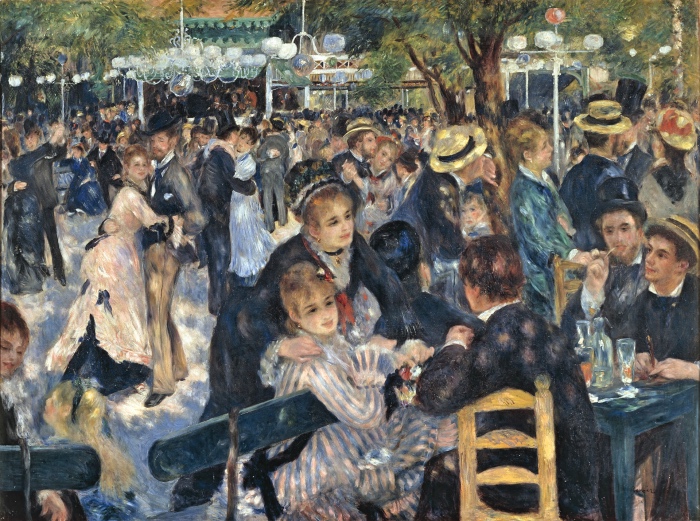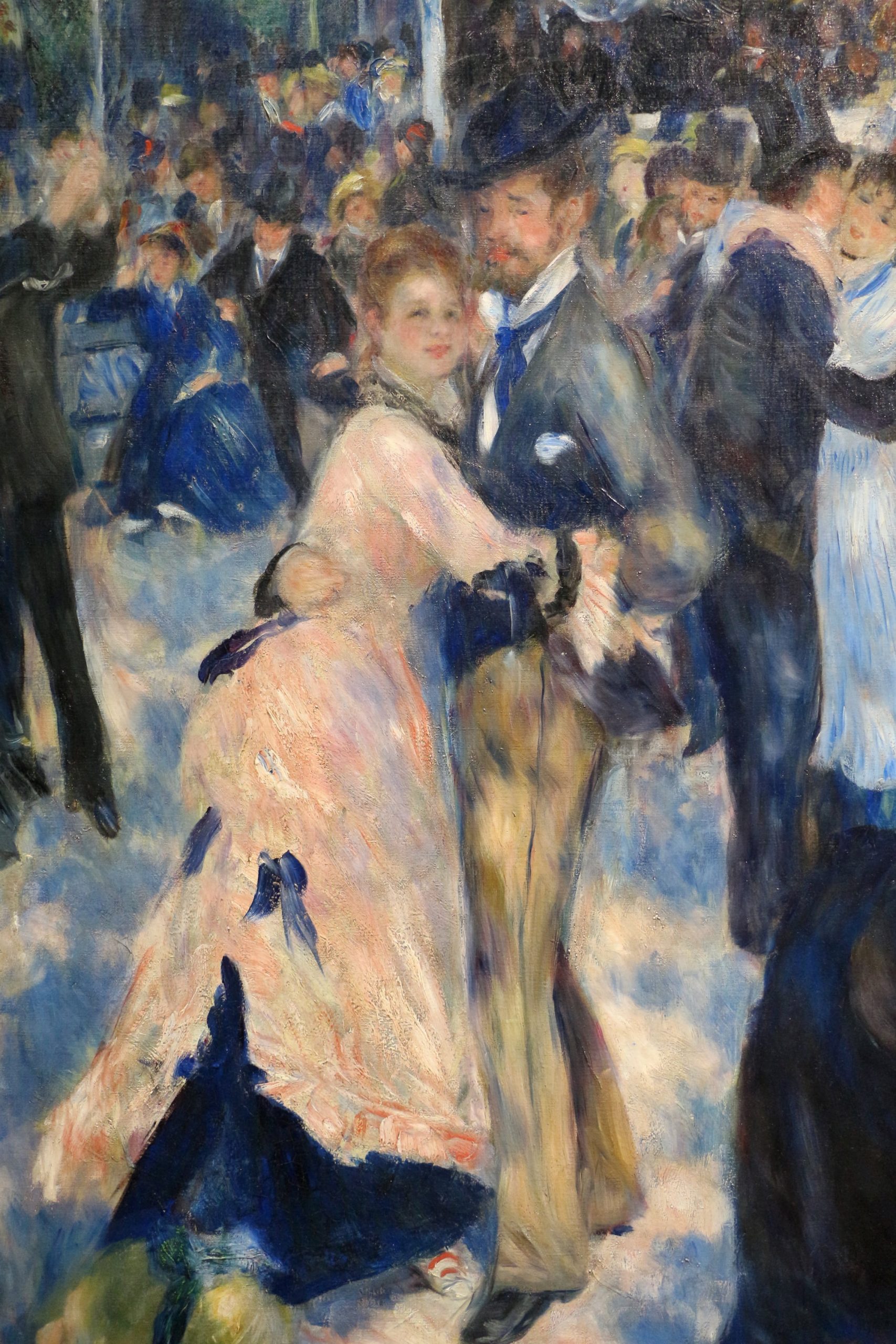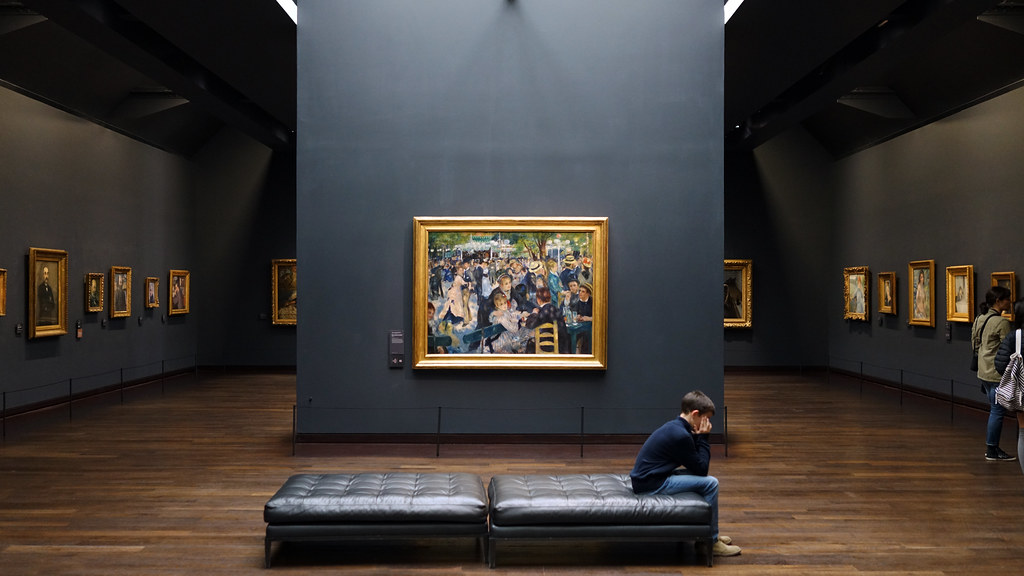
Renoir, Le Moulin de la Galette
Bal au Moulin de la Galette by Renoir is an Impressionist painting, made in 1876, depicting a scene of social life in the Parisian district of Montmartre in which the inhabitants enjoy dancing and socialising on a Sunday afternoon.
The work is the result of many months of work that allowed Renoir to create one of his most important masterpieces.
Bal au Moulin de la Galette by Renoir

Bal au Moulin de la Galette by Renoir
is a painting characterised by the vibrant light and vivid colours typical of Impressionism. The figures are painted with fluid brushstrokes and soft hues, giving a sense of movement and life to the scene.
Looking at this canvas, one almost seems to hear the music and voices of those present!
HOW THE WORK ‘BAL AU MOULIN DE LA GALETTE’ CAME INTO BEING
The painting is of considerable size and was created in 1876.
As was the technique of the Impressionist painters, the work was done ‘en plein air’, i.e. live. Therefore every day Renoir’s friends helped him transport the work from his studio in the rue de Cortot to the Moulin.
The Moulin del la Galette was one of the meeting places of the inhabitants of Montmartre, a district much loved by the artists who lived and worked in Paris at the time and where they could spend their days having fun and dancing.
Many of Renoir’s friends posed for this work and their portraits are recognisable in this scene.
DESCRIPTION OF BAL AU MOULIN DE LA GALETTE
The scene takes place on a sunny day, we see people dancing and groups of people laughing and chatting happily.
The group of people in the foreground are Renoir’s painter friends, gathered around the art critic Georges Rivière.
Seated in the foreground is the model Estelle, on the left the model Margot dancing with the Spanish painter Pedro Vidal de Solares y Cardenas.
In the painting, considered to be one of Renoir’s finest works, there are also his brother Edmond, his future wife Aline Charigot, and Gustave Caillebotte, who was to own the work.
The lights and shadows are created solely with colour.
Renoir does not use dark tones or shadows and, for example, the reflection of the sun on the floor is given by pink and blue.
The figures depicted are not sharp and almost dissolve into the environment, making the scene vibrant and fixing a moment of Parisian life on the canvas forever.
Those who criticised Renoir’s work called it too frivolous and superficial, in reality it is precisely this view of life that makes it extraordinary.

THE SUCCESS OF BAL AU MOULIN DE LA GALETTE BY RENOIR AND WHERE TO SEE IT
Renoir’sBal au Moulin de la Galette
was exhibited in 1877, in the third exhibition of the Impressionists, and was bought by Gustave Caillebotte, a great artist and author of The Floor Planers, but also a collector.
Today, Bal au Moulin de la Galette is considered one of the most famous and representative paintings of Impressionism, and is exhibited at the Musée d’Orsay in Paris.

